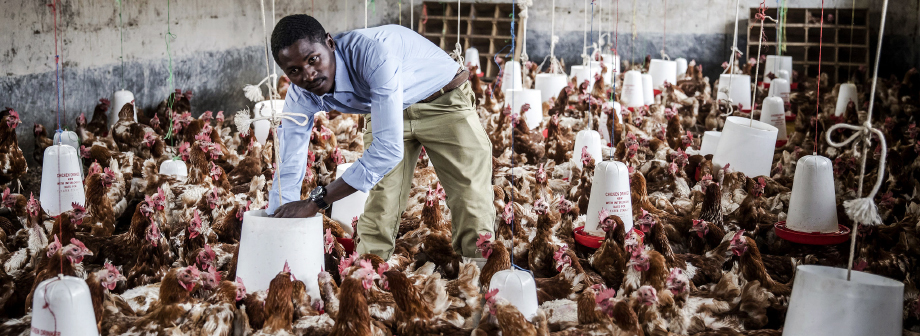FAO's role in animal health
The link between human and animal populations, and the surrounding environment, is particularly close in developing regions where animals provide transportation, draught power, fuel, clothing, high-quality proteins (meat, eggs and milk) and source of income. Therefore, animal health is a core element for sustainable development and livestock production.
As changes in livestock production increase the potential for new pathogens to emerge, grow and spread from animals to humans, healthy animals are closely related to healthy people and a healthy environment. Through the One Health approach, FAO contributes to improving animal health to make livestock production more productive and sustainable while achieving optimal health for all at the human-animal-environment interface.
Areas of work
Highlights
-influenza-in-dairy-cattle-in-the-united-states-of-america.png?sfvrsn=666a06f5_1)
publication
A(H5N1) influenza in dairy cattle in the United States of America
This edition of EMPRES Watch focuses on the detection and subsequent spread of A(H5N1) in dairy cattle across the United States of America, and presents the latest updates on the risks and recommendations.
-in-brief.png?sfvrsn=c4055053_1)
publication
Global strategy for the prevention and control of highly pathogenic avian influenza (2024–2033). In brief
This four-pager document provides a high-level strategic direction to support and inform the development and/or revision of national and regional action plans for HPAI prevention and control.

news
Empowering women's leadership in One Health — insights from West Africa
Nafinatu Abdullahi, Veterinary Paraprofessional Training Specialist at FAO Nigeria, reflects on the importance of empowering women in leadership roles to address challenges and drive progress in community health and gender equality in the country.

stories
Fighting animal diseases in Yemen
Tariq Al-Haidari is one of 200 community animal health workers trained by the Food and Agriculture Organization of the United Nations through a project funded by the World Bank.
.jpg?sfvrsn=521f73fe_11)
programmes
Programme Against African Trypanosomosis (PAAT)
African trypanosomosis is a lethal parasitic disease caused by single-celled organisms transmitted by blood-sucking tsetse flies. The disease affects both humans (sleeping sickness) and livestock (nagana).

In focus
FAO Reference Centres
The FAO Reference Centres for animal health are institutions designated by the Director-General to provide specific and technical device and services to FAO Member Countries on issues related to FAO’s mandate.
Events
16/ 5
2025
Informative sessions “Global Bee Health: Addressing Emerging Diseases and Enhancing Sustainable Beekeeping”
Rome (Italy), Hybrid Event, 16/05/2025
The beekeeping (apiculture) sector is key to contributing to food security through its pollination activity. This sector has been at the forefront of adopting sustainabl...
8/ 5
2025
FMD Serotype SAT1 alert: Situation update and recommendations for prevention, preparedness, and response in the Near East and West Eurasia
08/05/2025
Foot-and-mouth disease (FMD) is one of the most contagious animal diseases and considered of high importance for monitoring and control due to its capacity to rapidly spread across borders affecting large numbers of livestock...
Videos
How climate change affects animal health
10/07/2023
Livestock play a vital role in our diets, providing 33% of high-quality protein and 17% of our dietary calories globally. However, climate change is...
Working together to eradicate Peste des Petits Ruminants
10/01/2020
This video explains what Peste des Petits Ruminants is, how it affects sheep and goats, its potential impact on farmers’ livelihoods and incomes, and...
Global disease intelligence and tracking through FAO EMPRES-i+
10/01/2022
EMPRES-i+ is FAO’s new global animal disease information system that aims to improve intelligence, forecasting and early warning, enabling countries...









